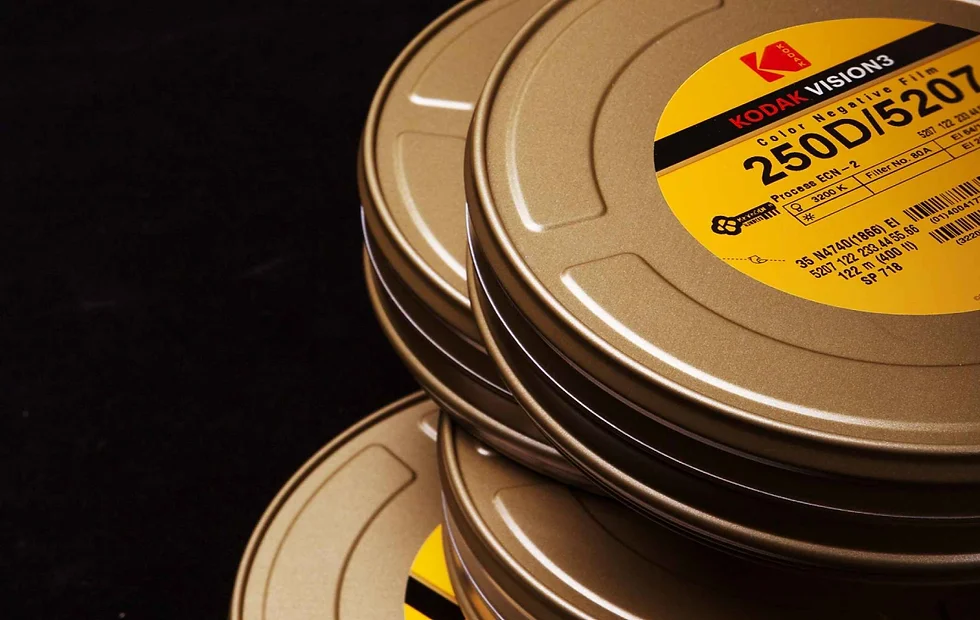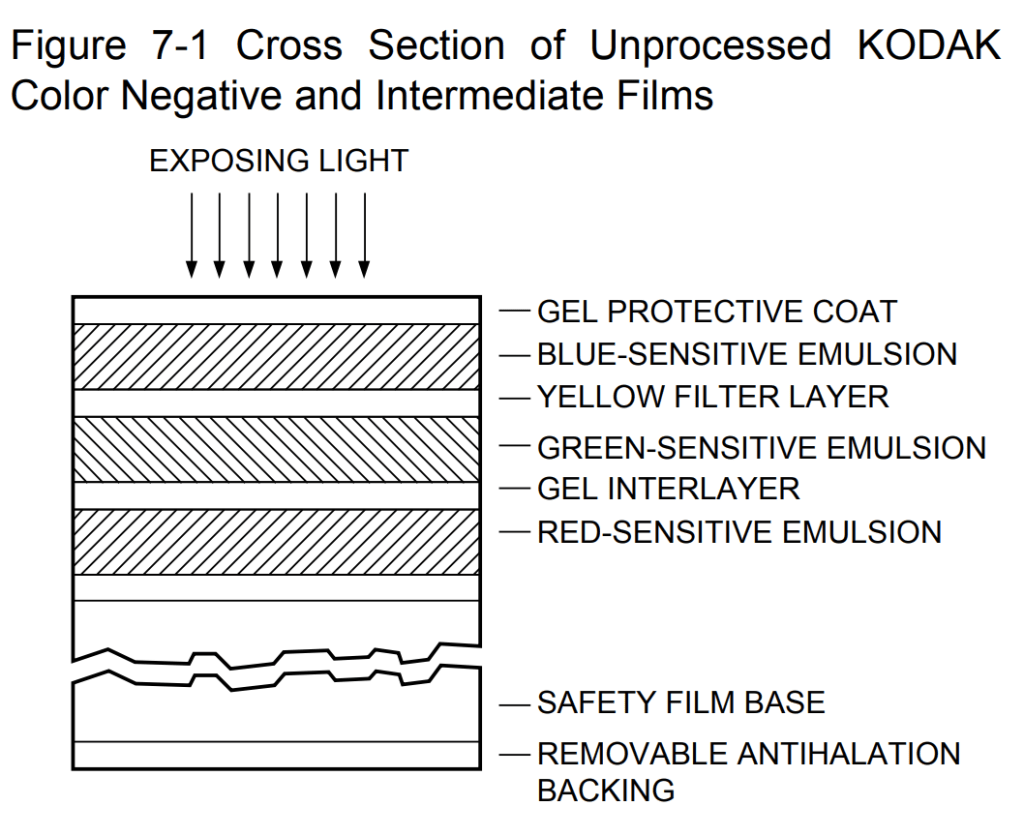
So you’ve stumbled upon this site, wondering what the heck ECN-2 might be. Fear not, I’ve got you covered!
What is ECN-2?
ECN-2, or Eastman Color Negative process #2, is a chemical process used to develop film. Unlike the standard C-41 color negative process, ECN-2 is formulated for motion picture film in high volumes. It targets a lower, more balanced gamma and lower contrast to facilitate easier post-processing. Due to this, colors come out more muted and flat compared to “regular” color film. The chemistry packs for developing ECN-2 film usually contain more steps as well.
Most importantly, all the info you need for processing ECN-2 is publicized by Eastman Kodak, whereas C-41 is shrouded in mystery 😉
Films
ECN-2 negative films (Vision3 5203/5207 for daylight 35mm, 5213/5219 for tungsten) are designed to be transferred to a positive film (Vision3 2383) via an intermediate film (Vision3 2254/2242), using the ECP-2 process. However, they work just as well as a negative stock for scanning.
The structure of the films themselves is identical to how C-41 films are built, with the exception of the antihalation backing, called remjet. The dyes in the respective layers are coupled to the CD-3 color developer, whereas C-41 dyes are coupled to CD-4. This explains the color shift.
Side note: you can actually use ECP-2 films in-camera as well, but they’re really slow, around ISO 1.6.

Current ECN-2 Films
Kodak’s Vision3 line of stocks are the only ECN-2 films currently in production. Fujifilm used to make Eterna until 2013 when they stopped production, and Agfa quit the business long ago.
Developing ECN-2 Film in C-41
If you develop Vision3 stock in C-41, you’ll get a slight speed increase due to the different chemistry (which is why Cinestill markets its films as 800T: it’s really Vision3 500T without remjet). However, this comes with caveats. As mentioned before, he dye couplers in Vision3 films are compatible with the CD-3 developing agent used in the ECN-2 process. When developed in C-41, which uses the CD-4 developer agent, crossovers appear, mainly visible in the shadows as a greenish tint that is difficult to compensate for in scans or under an enlarger.
Using “real” ECN-2, such as what I provide, offers your film a remarkable exposure latitude of 10-12 stops. C-41 development seems to diminish this a bit, although I cannot advocate for the exact difference.
Obtaining film
The easiest way to get your hands on some of this awesome motion film is by buying respooled Vision3 canisters. One reseller, which happens to be my favourite, is Analog Amsterdam. But, you can find these everywhere; just look for film labeled “500T”, “200T”, “250D” or “50D”, or even Cinestill film.
Important Note on Remjet
Lastly, before we stop: don’t send “regular” Vision3 film to a normal C-41 lab! Vision3 stocks are backed with a carbon layer called remjet, which can ruin their chemistry if not removed beforehand. It can also affect other customers’ rolls if the lab doesn’t notice it in time. This removal is not part of the regular film development process and needs special handling.
If you come across some bulk-rolled Vision3 (or maybe even old Eterna, lucky you!) film and wonder where to send it off to, the store is (almost) always open, with your films usually being processed in around one week.
